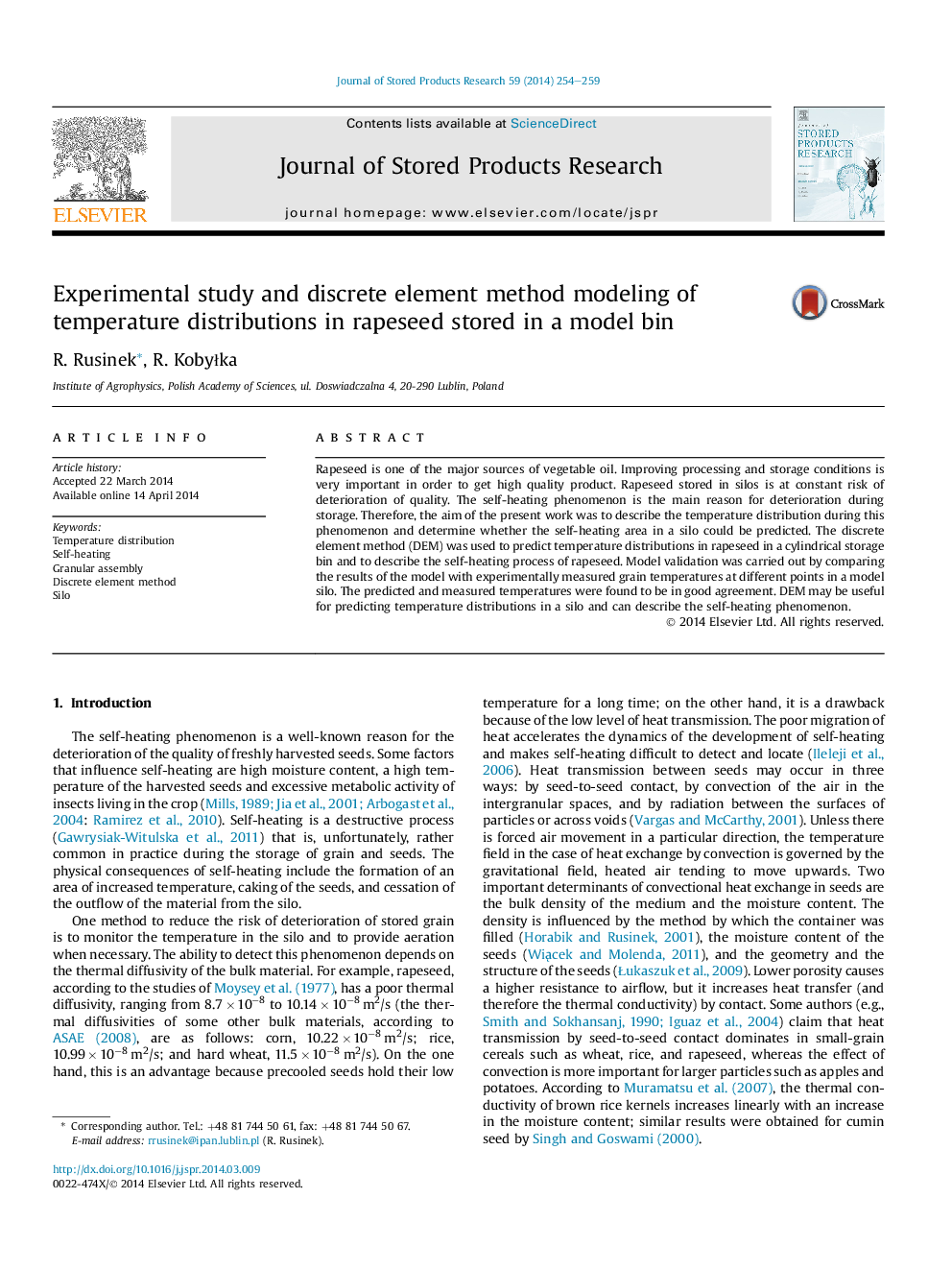| Article ID | Journal | Published Year | Pages | File Type |
|---|---|---|---|---|
| 6378467 | Journal of Stored Products Research | 2014 | 6 Pages |
â¢Progress of self-heating of rapeseed was evaluated experimentally and numerically.â¢The monitoring grid recommended by ISO might not detect the self-heating phenomenon.â¢DEM was able to predict distribution of temperature in a model silo.â¢DEM might be a useful tool for design when non-uniformity or anisotropy is involved.
Rapeseed is one of the major sources of vegetable oil. Improving processing and storage conditions is very important in order to get high quality product. Rapeseed stored in silos is at constant risk of deterioration of quality. The self-heating phenomenon is the main reason for deterioration during storage. Therefore, the aim of the present work was to describe the temperature distribution during this phenomenon and determine whether the self-heating area in a silo could be predicted. The discrete element method (DEM) was used to predict temperature distributions in rapeseed in a cylindrical storage bin and to describe the self-heating process of rapeseed. Model validation was carried out by comparing the results of the model with experimentally measured grain temperatures at different points in a model silo. The predicted and measured temperatures were found to be in good agreement. DEM may be useful for predicting temperature distributions in a silo and can describe the self-heating phenomenon.
